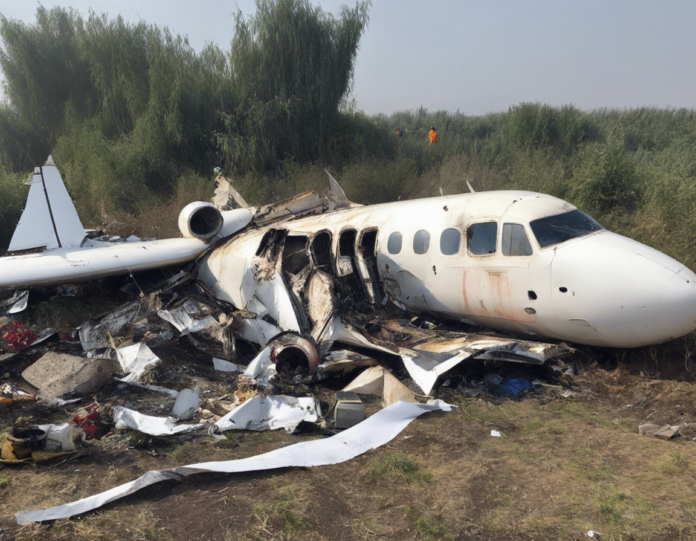On October 13, 2021, a tragic event occurred when the private plane of Harpal Randhawa, an aviation enthusiast and businessman, crashed in a rural area near Gypsum, Colorado. The crash claimed the lives of all five individuals on board, including Harpal Randhawa himself. The incident sent shockwaves through the aviation community and beyond, leaving many questioning what could have led to such a devastating outcome.
Events Leading to the Crash
The exact details of the events leading to the plane crash are still under investigation by the National Transportation Safety Board (NTSB) and the Federal Aviation Administration (FAA). However, initial reports suggest that the aircraft, a Cirrus SR-22, encountered difficulties shortly after takeoff from Eagle County Regional Airport. Witnesses on the ground reported seeing the plane flying at a low altitude before rapidly descending and ultimately crashing into the terrain.
Harpal Randhawa: Pilot and Entrepreneur
Harpal Randhawa was known for his passion for aviation and had logged numerous hours as a pilot. As the founder and CEO of a successful tech company, he was a well-respected figure in both the business and aviation worlds. His untimely death has left many in mourning, with tributes pouring in from friends, colleagues, and admirers around the globe.
Factors Under Investigation
The NTSB’s investigation into the crash will consider a variety of factors that may have contributed to the tragedy. These factors can include but are not limited to:
- Weather conditions at the time of the flight
- The experience and training of the pilot
- Mechanical issues with the aircraft
- Human error or pilot fatigue
- Air traffic control communications
- Maintenance history of the aircraft
Lessons Learned
While the investigation into the Harpal Randhawa plane crash is ongoing, it serves as a sobering reminder of the inherent risks involved in aviation. It is crucial for pilots, passengers, and aviation enthusiasts alike to prioritize safety above all else. Proper training, meticulous pre-flight checks, adherence to regulations, and situational awareness can all play a vital role in preventing accidents and ensuring a safe flying experience.
Frequently Asked Questions (FAQs)
1. Who was Harpal Randhawa, and why was he flying that day?
Harpal Randhawa was a successful entrepreneur and avid pilot who was known for his love of aviation. He was flying that day for personal reasons, likely enjoying a recreational flight.
2. What type of aircraft was involved in the crash?
The plane involved in the crash was a Cirrus SR-22, a popular single-engine aircraft known for its advanced avionics and safety features.
3. Were there any survivors in the crash?
Unfortunately, there were no survivors in the Harpal Randhawa plane crash. All five individuals on board, including Harpal Randhawa, lost their lives in the tragic accident.
4. What is the role of the NTSB in investigating aviation accidents?
The National Transportation Safety Board (NTSB) is an independent federal agency responsible for investigating transportation accidents, including aviation incidents. Their goal is to determine the probable cause of accidents and make safety recommendations to prevent future occurrences.
5. How long does an aviation accident investigation typically take?
The duration of an aviation accident investigation can vary depending on the complexity of the case. Some investigations may be completed within a few months, while others can take years to reach a final conclusion.
6. What can pilots do to ensure safety during flights?
Pilots can prioritize safety by adhering to pre-flight checklists, maintaining proficiency through regular training, staying updated on weather conditions, and practicing good decision-making skills while in the air.
7. Are private planes less safe than commercial airliners?
While commercial airlines have stringent safety regulations and oversight, private planes can also be safe when operated by well-trained pilots and properly maintained. Safety is a top priority in aviation, regardless of the type of aircraft.
8. How can the aviation community learn from accidents like the Harpal Randhawa plane crash?
Accidents like the Harpal Randhawa plane crash highlight the importance of continuous learning and improvement in aviation safety. By studying the factors that led to the crash, the industry can implement changes to prevent similar tragedies in the future.
9. What support is available for the families of those involved in aviation accidents?
Families of individuals involved in aviation accidents can seek support from organizations such as the National Air Disaster Alliance/Foundation (NADA/F) and the Air Crash Support Group. These groups offer resources, counseling, and assistance to those affected by aviation tragedies.
10. How can the public contribute to aviation safety efforts?
The public can contribute to aviation safety efforts by reporting any safety concerns or suspicious activities to the appropriate authorities, staying informed about aviation regulations, and promoting a culture of safety and accountability within the aviation community.
In conclusion, the Harpal Randhawa plane crash serves as a somber reminder of the risks inherent in aviation and the importance of prioritizing safety at all times. While the investigation continues to uncover the circumstances surrounding the tragic event, it is crucial for the aviation community to learn from such incidents and work towards preventing future accidents. By staying vigilant, informed, and committed to best practices, we can honor the memory of those lost in aviation accidents and strive for a safer sky for all.












